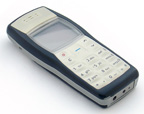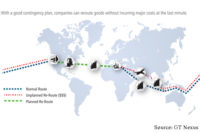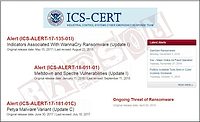
Cellular technologies may not replace licensed and unlicensed wireless systems, but they have their place
Cell phone technology, of course, doesn’t work like TCP/IP, but it can “dial in” from remote locations where cell phone base stations exist. And, according to Day, it’s getting harder and harder to find locations in the
A primary advantage to cell phone technology is its reasonably low cost hardware, which often is reduced to a single chip or two. In countries like
As far as food industry applications, one application could use a cell-based temperature sensor that monitors the temperature of refrigerated/frozen foods on a truck as it moves from plant to warehouse to distributor. In a refrigerated warehouse, various monitoring applications would lend themselves to wireless cell technology. According to Day, cellular coverage is improving to the point that cellular technology could be a good solution in a multi-acre distribution center.
Another potential application where Wi-Fi or even licensed radio technology often is used is the vineyard-for monitoring ground moisture, air temperature, humidity, etc. Day says there is existing cell coverage in most vineyards that could handle the job. With a high-valued product such as wine, monitoring these parameters is a necessity.
How would costs compare? Obviously, with licensed radio and Wi-Fi, the costs are fairly easy to determine, except when there are unanticipated wrinkles in coverage. While messaging (“texting”) fees have been known to be exorbitant to many consumers, rates for data transmission can be very reasonable, says Day.
While cell technology isn’t a panacea for all wireless applications, it does have some advantages. Day lists them:
- Near ubiquity of service over a wide area of the developed world;
- Can also work within distribution centers and processing centers using indoor coverage and capacity solutions;
- Availability of low-cost, data-only service from some carriers;
- Technology available in dual and tri-band configurations for additional coverage and performance options;
- Mature technology with known propagation and quality of service characteristics;
- Large-scale technology on aggressive, continuous improvement technology cost and capability curve: cost effective for many applications now, will be more cost effective in the future;
- Can be easily integrated with a variety of sensor technology, e.g., temperature sensor, vibration sensor, location services, GPS and (through Bluetooth interface) many other technologies;
- Cellular technology available in all developed and most developing countries in the world to address global supply and distribution chains;
- Technology and service is easy to maintain and diagnose due to widespread understanding of cellular capabilities and locally available service and maintenance technicians;
- Standards-based technology has more vendor options and lower costs than most proprietary solutions.


